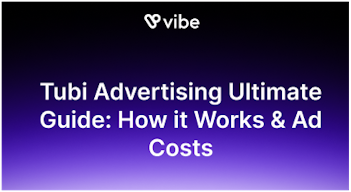What is retargeting and how does it work?
Visibility on the internet doesn’t just happen; and even if you manage to attract qualified visitors to your website, immediate conversion is not a given. Customers may have an interest in what you are selling, but they can also decide that they don’t want to buy anything right now, or even get distracted and never complete a purchase.
In many cases, these almost-clients don’t come back on their own. This is where retargeting ads come in. What are retargeting ads? Definition, examples, and explanations.
What are retargeting ads?
Definition
A retargeting ad campaign is aimed at those website visitors who have shown an interest in your products and services but left your site without making a purchase. The goal is to target them a second time (hence re-targeting) to remind them of your brand, and more specifically of the pages they visited on your website.
There are several approaches available when it comes to setting up a retargeting campaign. For example, you could use Facebook’s retargeting functionality, or rely on Google Ads. Today, we want to talk more specifically about a brand new type of customer engagement: TV retargeting, which allows you to find web visitors at home, streaming their favorite shows.
USING MORE POWERFUL RETARGETING TOOLS ALSO ALLOWS YOU TO INCREASE SALES AND CUSTOMER LOYALTY BY CONNECTING DIRECTLY WITH YOUR VISITORS.
How do retargeting campaigns work?
Until recently, retargeting ads had to rely on cookies, which are small pieces of code you can place on your website in order to track a new user. These cookies work like tiny files that store a person’s information and preferences directly on their browser. Today, Vibe.co can help you retarget your users thanks to pixel tracking, but more on that later.
It safely and anonymously gathers data about the user and about the pages they visited while on your website. The information is added to a list that you will then be able to use to select only the most relevant ads to be served to this user again.
Some days later, that user will see ads featuring the items they looked at while exploring your website come up while reading an article, scrolling down their social media feed, visiting other pages, or watching their connected tv. This will remind them that your website is just a click away!
Retargeting with ads on television is simple: place a Vibe pixel on your website for a few weeks prior to your campaign launch, use that visitor data as your targeted audience segment, and launch! Some of our most impactful campaigns have used this tactic, and with good reason. Check out some of these stats from a recent comScore survey:
- Retargeting can lift ad engagement rates up to 400%
- The click-through rate (CTR) is 180.6% higher for retargeted users on the display network
- A retargeting campaign, on average, performs nearly 10 times better than a regular display ad campaign
- Increases brand revenue and acquires new customers (+33% each), increases website engagement (+16%), and brand awareness lift (+12%).
- Highest increase in brand-related search queries, at 1,046 percent.
- People who visit a website after having seen a remarketing ads are 8 times cheaper to reach per click.
- Conversion rates actually increase over time, up until the user has seen the ad about five or six times.
- 37% of consumers respond to retargeted ads because they like product shown
Remarketing vs. Retargeting
Retargeting and remarketing are often confused because they work toward the same end. Both focus on target audiences that are most likely to make a purchase, namely those who already know of your brand and visited your site at least once. And both can help you boost your brand awareness and build a more profound connection with customers.
What sets the two strategies apart are their methodologies.
Retargeting strategies target audiences with paid ads from the data gathered on your website or social media account. It is aimed at people who visited your pages but haven’t made a purchase yet.
Remarketing, on the other hand, consists in sending emails or targeting ads to customers who have made a purchase with you in the past to encourage them to visit your website again. The idea is to convert people a second time (or more!).
What constitutes a good retargeting strategy?
Most effective marketing strategies rarely involve just one single approach, which means that retargeting should play a role in your overall marketing, as opposed to being your only way to reach your custom audience.
Make sure you are using your retargeting data to find high-intent customers, but also as a way to exclude those viewers and tailor 1st time shopper ads and promos for folks who have never before been entered in your CRM database or visited your website.
Similarly, make sure your landing pages address those differences in shopper profile to maintain relevance and keep your customers engaged.
How to set up an Ad retargeting campaign?
How you set up your ad retargeting campaign will depend on the goals you wish to focus on, the tools you choose to use, and the channels where you want your ads to be shown.
Define your retargeting ad goals
There are different ways to go about implementing a retargeting ad campaign. The first step to help you determine whether you should use a list-based or a pixel-based approach, for instance, is to get clear on your objectives.
Retargeting ad examples include campaigns designed to generate awareness, drive conversion, increase customer lifetime value, complete the buyer’s journey, introduce new products, and minimize cart abandonment. Instead of focusing on all these goals at once, you could use retargeting to address a specific issue.
So if, for example, you notice that cart abandonment represents a large proportion of your unrealized sales, you should use retargeting to recover some of these customers. The ads shown to them will focus on the product categories most often left in carts, reminding shoppers that they are still available for purchase.
Use the best retargeting ad tools
Once you are clear on exactly what you are hoping to achieve (goal) and how you wish to go about it (strategy), you can decide if it makes more sense for you to use native tools or to work with an ad retargeting platform.
If you know that your customer base is active on social media, you may choose to use Meta retargeting to cover Facebook and Instagram. If you are more dependent on organic searches and your customers typically spend time reading articles on Google, work on retargeting there. If your audience is more likely to be found streaming their favorite shows online (and who isn't?!) Vibe's retargeting tool will work best for you. Ideally, your overall strategy will include a mix of channels and tactics.
Social media Retargeting
Social media retargeting is a form of online advertising that allows businesses to target ads to users who have previously engaged with their brand on social media. This type of advertising is a way to reach potential customers who may be interested in your products or services, but who haven’t made a purchase yet.
Retargeting ads on social media can be extremely effective in driving conversions and can be used on Facebook, Twitter, and Instagram. When done correctly, social media retargeting can be a powerful tool to help you boost your sales and grow your business.
The most common tactic uses cookies to track users who have visited you site. Once the information gathered, you can target these users with ads on social media.
You can also implement social media retargeting with your email lists. If you have a list of email addresses from users or prospects, you can upload your list to social media platforms and target them with ads.
BY LEVERAGING A LARGE AMOUNT OF DATA FROM USER PROFILES, SOCIAL MEDIA PLATFORMS CAN MAKE YOUR AD PLACEMENTS AS RELEVANT AS POSSIBLE.
Email Retargeting
Email retargeting is only viable if you already have access to your visitors’ information, including their names and locations, and, of course, their email addresses. You could use this data to set up a remarketing campaign or to serve list-based retargeting ads.
IN ANY CASE, IT OFTEN PAYS TO REACH YOUR AUDIENCE WHERE AND WHEN IT IS IN THE BEST MINDSET TO RETURN TO YOUR SITE AND COMPLETE A PURCHASE. INSTEAD OF EMAILING PEOPLE DIRECTLY, IT IS USUALLY MORE RELEVANT TO USE THEIR INFORMATION TO FIND THEM ON SOCIAL MEDIA, WHERE THEY CAN ENGAGE WITH YOUR CONTENT.
CTV and OTT Retargeting
Programmatic retargeting – such as CTV retargeting and OTT retargeting – allows you to reach users who have previously visited your website when they stream content or watch TV through their connected devices. This is something that can’t be achieved with linear television advertising because it doesn’t offer viewers a personalized experience.
CONNECTED TV, ON THE OTHER HAND, IS DESIGNED TO HELP KEEP YOUR AUDIENCE ENGAGED WITH YOUR BRAND. THE NEXT TIME THEY CONSUME THEIR FAVORITE CONTENT, THEY’LL BE REMINDED OF THE PRODUCTS THEY ENJOYED LOOKING INTO WHEN THEY VISITED YOUR SITE. THEY’LL BE THINKING OF YOU AT THE SAME TIME AS THEY RELAX IN FRONT OF THE SHOWS THEY LOVE!
Start building your retargeting campaign with Vibe
Vibe is designed to make creating your own advertising campaigns a breeze. You can select your channel inventory from a list of over 500+ apps and channels and manage your budget on a daily or a lifetime basis, giving you all the flexibility you need to refine your strategy.
Set your maximum CPM and choose between automatic and manual bidding before uploading your ad creative, and that’s it! You can publish your retargeting ad campaign and let the magic of automation do its work.


